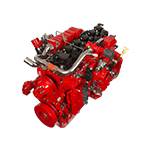Tet . 21, 2024 02:33 Back to list
Understanding the Causes and Solutions for Glazed Brake Drums in Vehicles
Understanding Glazed Brake Drums Causes, Effects, and Solutions
Brake systems are a crucial component of any vehicle, responsible for safe and efficient stopping. Among the various components of a brake system, brake drums play an essential role, especially in vehicles equipped with drum brakes. However, one common issue that can compromise the effectiveness of brake drums is glazing. This article aims to explore what glazed brake drums are, the causes behind this phenomenon, its effects on vehicle performance, and potential solutions.
What are Glazed Brake Drums?
Glazed brake drums occur when the surface of the brake drum becomes shiny and smooth due to excessive heat and friction. This condition can severely affect the braking performance of a vehicle. Brake drums are designed to provide friction, allowing the brake shoes to clamp against them and create the stopping force. However, when the surface becomes glazed, this friction is significantly reduced, which can lead to longer stopping distances and an increased risk of accidents.
Causes of Glazed Brake Drums
There are several factors that can contribute to the glazing of brake drums
1. Overheating One of the primary causes of glazed brake drums is overheating, which can occur due to prolonged or aggressive braking. This is often seen in heavy vehicles, towing situations, or during frequent stops in urban driving conditions.
2. Poor Quality Brake Linings Using low-quality brake pads or shoes can also lead to glazing. Inferior materials may not withstand heat well, resulting in increased wear and a smoother, glazed surface on the brake drum.
3. Improper Installation If brake components are not installed correctly, it can lead to uneven wear. For example, if the brake shoes do not make proper contact with the drum, excessive heat can build up in specific areas, causing glazing.
4. Lack of Maintenance Regular maintenance is crucial for optimal brake performance. Neglecting to check and replace worn brake linings or failing to adjust the brakes can lead to overheating and glazing.
Effects of Glazed Brake Drums
glazed brake drums

The glazing of brake drums can have several negative effects on vehicle performance
1. Decreased Stopping Power The primary concern with glazed brake drums is the reduction in braking effectiveness. Drivers may experience longer stopping distances, which can be particularly dangerous in emergency situations.
2. Increased Wear on Brake Components When brake drums are glazed, it can lead to further wear on brake linings and other components. This could result in a more expensive repair down the line, as parts may need replacing sooner than expected.
3. Vibration and Noise Glazed surfaces can cause vibrations during braking and may lead to a squealing or grinding noise. Such sounds not only signify a problem but can also be a nuisance while driving.
Solutions for Glazed Brake Drums
To address the issue of glazed brake drums, several solutions can be considered
1. Resurfacing or Replacing Brake Drums One effective method is to have the brake drums resurfaced to restore a rougher, more functional surface. In severe cases, replacing the drums may be necessary to ensure proper braking performance.
2. Upgrading Brake Components Switching to higher-quality brake pads and shoes can help prevent future glazing. Look for products that are designed to withstand higher temperatures and offer better friction.
3. Regular Maintenance Implementing a routine inspection and maintenance schedule for your brakes can help catch issues like glazing before they escalate into more significant problems. This includes checking for proper installation, wear patterns, and heat damage.
4. Driving Habits Adopting better driving habits, such as gradual acceleration and deceleration, can help reduce the likelihood of overheating and glazing of brake drums. Being mindful of braking techniques, especially in heavy-load or downhill situations, can make a significant difference.
In conclusion, while glazed brake drums can pose a serious safety risk, understanding the causes and effects can empower vehicle owners to take preventive measures. Regular maintenance, quality components, and mindful driving can go a long way in ensuring your brake system remains efficient and effective.
-
Brake Drum Liza Durable & High-Performance Brake Solutions
NewsMay.29,2025
-
Brake Drum Liza Durable Drum Brake & Shoe Replacement Solutions
NewsMay.29,2025
-
Brake Drum Liza High-Quality Drum Brake & Shoe Solutions
NewsMay.29,2025
-
Brake Drum Liza Durable Drum Brake & Shoe Solutions for Vehicles
NewsMay.29,2025
-
Brake Drum Liza Premium Drum Brake Components & Shoes
NewsMay.29,2025
-
Brake Drum Man Durable Drum Brake Drums & Shoes Supplier
NewsMay.28,2025
